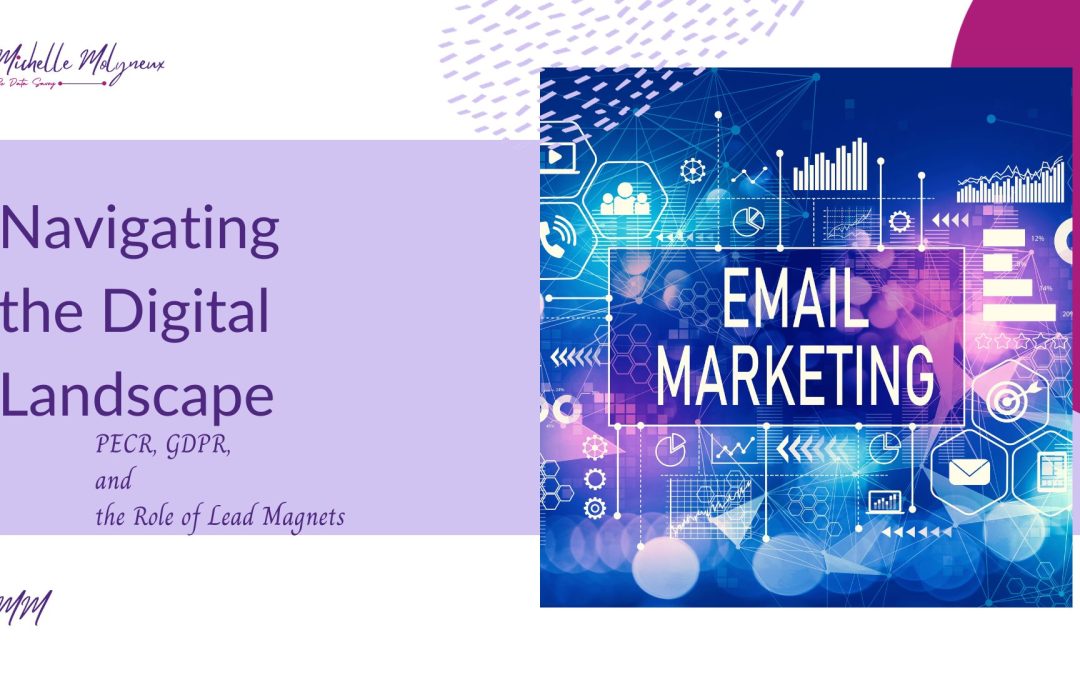In an era where data is the new currency and digital interactions are the norm, it’s crucial for businesses to understand and comply with privacy regulations to build trust with their audience. The Privacy and Electronic Communications Regulations (PECR) and the General Data Protection Regulation (GDPR) are two key regulations that significantly shape digital practices. In this blog, we will continue to discuss the importance of consent, delve into the fundamentals of PECR and GDPR, and explore how businesses can leverage lead magnets while staying compliant.
Understanding PECR
The Privacy and Electronic Communications Regulations (PECR), which came out in 2003, governs electronic communications in the United Kingdom and the EU. So, they are not new. Working alongside GDPR, PECR focuses specifically on electronic marketing, cookies, and the security of public electronic communications services.
Navigating GDPR
The General Data Protection Regulation (GDPR) is a comprehensive data protection regulation for all European Union (EU) member states. UK GDPR consists of the regulations that were passed after Brexit. They both focus on processing personal data and individuals’ rights.
Key terms:
- Marketing Communications: PECR requires businesses to obtain consent before sending marketing communications electronically. This includes emails, text messages, and automated calls. Ensuring that individuals have explicitly opted in to receive such communications is important.
- The differences between marketing to individuals, including sole traders, partnerships, and registered companies. Yes, the rules are different for individuals and companies.
- The soft-opt: The soft-opt is when a business has a legitimate interest in adding them to its marketing list. It allows businesses to add current clients or those in negotiation to sell something without consent, but you must still give the option to opt-out at any time.
- Cookies: Cookies, commonly called internet cookies, are small text files containing data snippets, such as a username and password, that help identify your computer during network use. These cookies are tailored to individual users to enhance their online browsing experience. When you connect, the server generates the cookie data, assigning it a unique ID specific to you and your computer. As cookies are shared between your computer and the network server, the server can read the unique ID, allowing it to deliver personalised content directly to you.
- Lawful Processing: Organisations must have a lawful basis for processing personal data. Consent is one of the lawful bases, and obtaining unambiguous consent is crucial for GDPR compliance.
- Data Subject Rights: GDPR grants individuals certain rights, including the right to access, rectify, and erase their personal data. Businesses must have processes in place to facilitate these rights.
- Data Protection Impact Assessments (DPIAs): DPIAs are required for high-risk data processing activities. Businesses must assess the impact of their data processing on individuals’ privacy and implement measures to mitigate risks.
The Role of Lead Magnets
I love a good lead magnet. They are valuable resources or incentives businesses offer potential customers in exchange for their contact information. A lead magnet could be an ebook, a whitepaper, a webinar, or any other content that aligns with the audience’s interests, wants or needs. It is something to get their attention and attract them to your business.
I need to add here that this is a lore. The prospects have not bought a service or product or are in negotiations for your service or product. They want the freebie. Who doesn’t want a good freebie?
Leveraging Lead Magnets Responsibly:
- Transparent Consent: When collecting contact information through lead magnets, ensure that users provide clear and informed consent. Tell them their information will go on to your mailing list, and you will email them (weekly, monthly, ad-hoc). The best practice is to have a link to your privacy policy while collecting personal data.
- Data Security: Safeguard the information collected through lead magnets. Ensure you are using a GDPR-compliant email marketing tool AND have multi-factor authentication set up for additional security. And ensure that you give anyone who needs access to their own account.
- Regular Audits and Updates: Review and update your processes to comply with evolving regulations. Conduct regular audits to ensure your data practices align with PECR and GDPR requirements.
In conclusion, businesses can successfully navigate the digital landscape by understanding and adhering to PECR and GDPR regulations. When used responsibly and in compliance with these regulations, lead magnets can be powerful tools for building customer relationships and generating leads. Businesses can create a trustworthy and compliant digital presence by prioritising transparency, user consent, and data security.
For more information and guidance, why not download our guide and checklist

